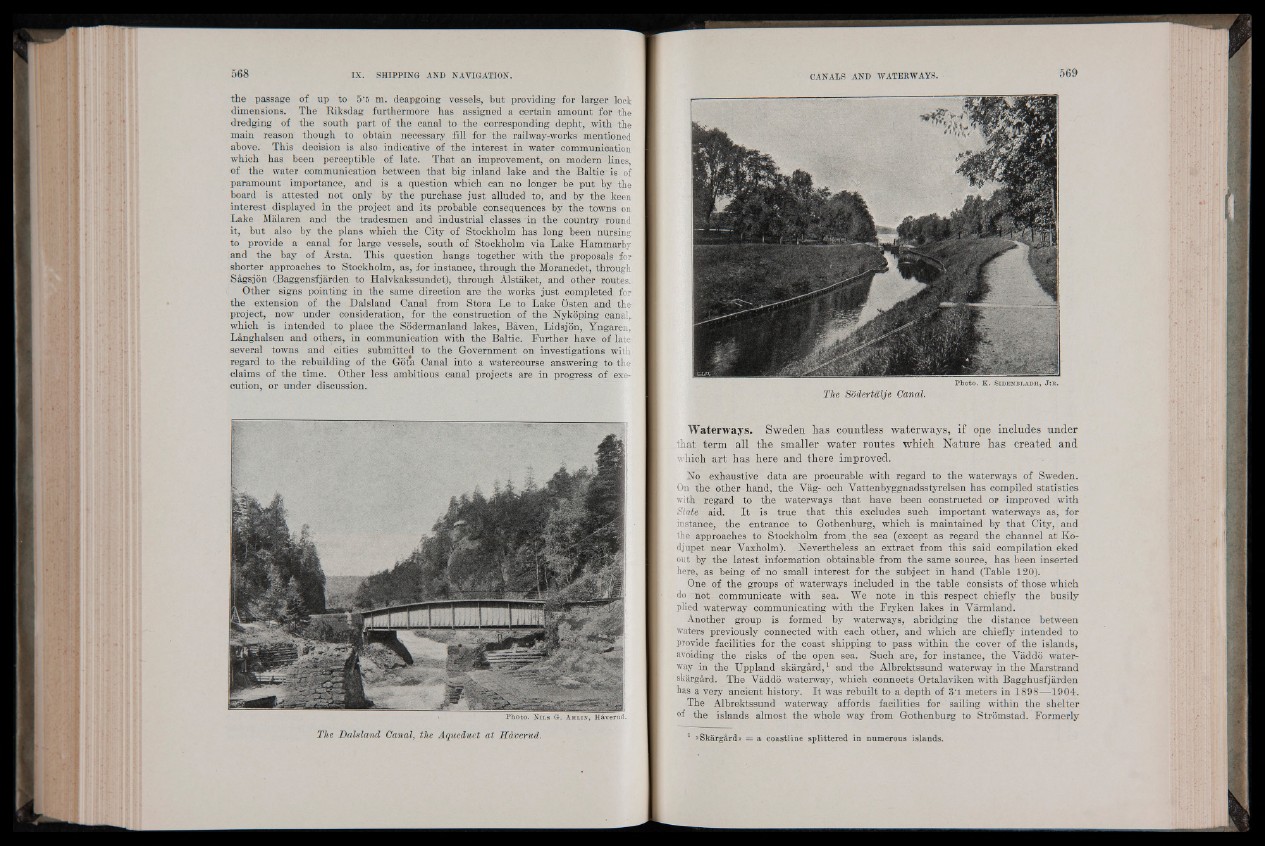
the passage of up to 5't m. deapgoing vessels, but providing for larger look
dimensions. The Riksdag furthermore has assigned a certain amount for the
dredging of the south part of the canal to the corresponding depht, with-the
main reason though to obtain necessary fill for the railway-works mentioned
above. This decision is also indicative of the interest in water communication
which has been perceptible of late. That an improvement, on modem lines,
of the water communication between that big inland lake and the Baltic is of
paramount importance, and is a question which can no longer be put by the
board is attested not only by the purchase just alluded to, and by the keen
interest displayed in the project and its probable consequences by the towns on
Lake Malaren and the tradesmen and industrial classes in the country round
it, but also by the plans which the City of Stockholm has long been nursing
to provide a canal for large vessels, south of Stockholm via Lake Hammarby
and the bay of Arsta. This question hangs together with the proposals for
shorter approaches to Stockholm, as, for instance, through the Moranedet, through
Sagsjon (Baggensfjarden to Halvkakssundet), through Alstaket, and other routes.
Other signs pointing in the same direction are the works just completed for
the extension of the Dalsland Canal from Stora Le to Lake Osten and ¡.the
project, now under consideration, for the construction of the Nykoping canal,
which is intended to place the Sodermanland lakes, Baven, Lidsjon, Yngaren,
Langhalsen and others, in communication with the Baltic. Further have of late
several towns and cities submitted to the Government on investigations with
regard to the rebuilding of the Gota Canal into a watercourse answering to the
claims of the time. Other less ambitious canal projects are in progress of execution,
or under discussion.
P h o to . N il s G. Ah l in , H&verud.
The Dalsland Canal, the Aqueduct at Hâverud.
P h o to . K . SlDENBLADH, J :R .
The Södertälje Canal.
Waterways. Sweden has countless waterways, if one includes under
that term all the smaller water routes which Nature has created and
which art has here and there improved.
No exhaustive data are procurable with regard to the waterways of Sweden.
On the other hand, the Vag- och Vattenbyggnadsstyrelsen has compiled statistics
with regard to the waterways that have been constructed or improved with
State aid. I t is true that this excludes such important waterways as, for
instance, the entrance to Gothenburg, which is maintained by that City, and
the . approaches to Stockholm from the sea (except as regard the channel at Ko-
djupet near Vaxholm). Nevertheless an extract from this said compilation eked
out by the latest information obtainable from the same source, has been inserted
here, as being of no small interest for the subject in hand (Table 120).
One of the groups of waterways included in the table consists of those which
do not communicate with sea. We note in this respect chiefly the busily
plied waterway communicating with the Fryken lakes in Varmland.
Another group is formed by waterways, abridging the distance between
waters previously connected with each other, and which are chiefly intended to
provide facilities for the coast shipping to pass within the cover of the islands,
avoiding the risks of the open sea. Such are, for instance, the Yaddo waterway
in the TJppland skargard,1 and the Albrektssund waterway in the Marstrand
skargard. The Vaddo waterway, which connects Ortalaviken with Bagghusfjarden
has a very ancient history. I t was rebuilt to a depth of 3‘1 meters in 1898—1904.
The Albrektssund waterway affords facilities for sailing within the shelter
°f the islands almost the whole way from Gothenburg to Stromstad. Formerly
1 »Skarglrd» = a coastline splittered in numerous islands.